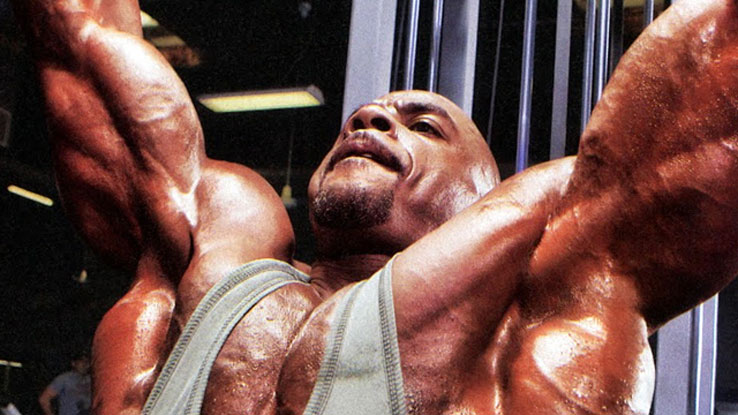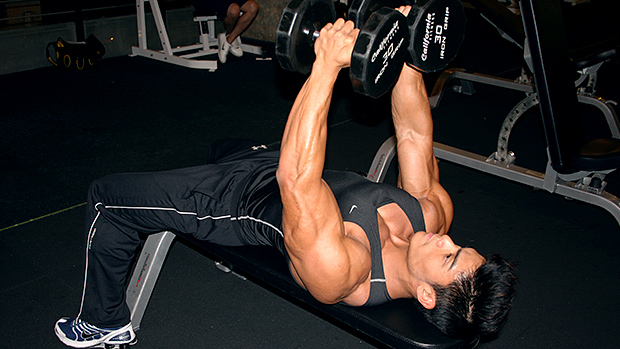I grew up in powerlifting gyms and played football into my early twenties. As reluctant as I am to admit it, this upbringing trained me to be a meathead.
I'll give you an example of my problem solving logic as a nineteen year-old. Every problem could be solved by getting stronger.
Can't squat deep? You're weak. Get stronger.
Low back hurt? Stop being soft. Get stronger.
Can't pick up chicks? It's because they think you're a pussy. Stop wearing your t-shirts tucked in. And get stronger.
Over the past few years, however, I've changed my focus a bit.
I'm still a big strength advocate, and I think toughness is something most people could use more of. But after some time, education, and experience, I've found there's a lot more to getting stronger than stacking plates and hitting more reps. Clean movement is just as important for continually gaining strength.
A few years back I was reading an Alwyn Cosgrove article when something clicked. He explained that making a distinction between strength and mobility training is pointless. They're inseparably paired, each contributing to the other.
Around the same time, I was reading Eric Cressey's programming and noticed the mobilizations he used during rest periods. He, and several other established coaches, called them fillers.
These days, the term 'filler' is part of training vernacular. Back then, however, I was blown away. What a great idea! Fill time, keep sessions dense, and feel better.
At that point, though, I didn't understand how to pair the right lifts with the right mobilizations. And I didn't understand the dramatic effect mobility has on improving strength.
Observation, experimentation, learning more about biomechanics, and reading up on the nervous system gave me the insight to develop a pairing process.

Matching mobilizations with activation exercises started in sports rehab and has been adapted to fit in the strength world.
I've made friends with chiropractors that specialize in rehab– not just cracking necks and cashing checks. When they describe their treatment process to me it usually goes as follows:
Find the faulty movement pattern and re-teach it while alleviating restrictions and improving mobility and stability.
That, of course, is my summary, most likely grossly over generalized. But it offers a simple template that we can apply for our own purpose– building mobility into our strength training sessions to add training density and improve big lift performance.
The treatment template above works from broad correction to narrow correction. That's how we can apply mobility exercises to serve as active rest between sets of strength exercises. Applying a specific mobilization will be narrow, but will improve our overall movement for a given strength movement.
Three principles will guide our mobility exercise selection for each strength lift:
- Improving sequencing
- Improving patterning
- Alleviating tension created by the strength exercise
Muscles work in 'force couples' around a joint– agonists and antagonists, extensors in contrast to flexors, and vice versa. This arrangement allows for full joint range of motion with stability, but it can be limiting when trying to generate as much force as possible.
A tight, or short, antagonist limits the function of the agonist for a given movement. Not only will the tension in the antagonist limit joint range of motion, it'll also divert neural drive away from the agonist. Recruited before the agonist, synergists are bumped from the supporting cast to the main roles.
Relaxing the antagonist while improving its extensibility will improve sequencing and function of the agonist for a given movement.
I use the Joint-by-Joint approach to picture joint movement during lifts. If you're unfamiliar, it is the system of understanding mobility and stability developed by Gray Cook and Mike Boyle.
Here's a quick and dirty synopsis:
Joints are stacked in an alternating pattern moving from bottom to top. Joints that require stability are adjacent to joints that require mobility.
That's simple enough. We give joints that require mobility more range of motion while improving the stability of joints that move less. By doing so, we can better position our bodies at the beginning of the lift and through its completion. You move better within a given lift and put more weight on the bar.
However, you won't perform optimally if you can't put your body in good positions. The key is matching the right mobilizations with the right lifts to improve specific function.
Joint and segmental stability require a lot of tension. During the lift this is good– it means that you're tight enough in the right places. Unfortunately, this tension can hang around even after the given lift, or session, is over.
Include drills that alleviate the tension during heavy lifts and you won't have to buy slip on shoes and look like Herman Munster when you turn in your chair.
The grand interplay between strength and mobility is facilitated by several factors: joint range of motion, joint positioning, patterning, and sequencing. These qualities are inseparable– they affect each other at all times, improving or impairing performance for each lift.
For example, poor thoracic mobility while squatting mars hip positioning. Sequencing is skewed, the wrong muscles fire at the wrong time, and the squatting task is unevenly distributed. Performance on a given lift is both affected acutely and over time because of sub-par mobility. Tragically, the story ends with a lot of shoulda-coulda-wouldas.
To avoid this, address joint limiting factors between sets of your big movements. Below is a chart that I put together to help with predictable limiting factors for each movement.
| Movement | Limiting Factors |
|---|---|
| Squat | Ankle dorsiflexion, thoracic spine mobility, hip mobility, anterior core strength |
| Bench | Upper-back strength/scapular stability, anterior hip mobility/hip stability, shoulder stability |
| Conventional Deadlift | Thoracic spine mobility, hip mobility, hamstring extensibility |
| Overhead Press | Thoracic spine mobility, shoulder stability, shoulder mobility, core stability |
These are typical limiting factors– you may have one or more, you may have none. This is where training partners and taping your lifts come in handy. If you don't have access to a camera and lift alone, it's easiest to address them all.
Based on the potential limitations of each lift, and in the spirit of hoisting superior iron, here are solid strategies for adding mobility fillers to the big four lifts. Remember, the goal is performance. Pre-habilitation is great, and necessary, but we're here to kick ass.
Since the deadlift is all about starting strength, pre-lift positioning is big for promoting a successful lift. Check the chart above and you'll find thoracic spine mobility listed first as a limiting factor.
Poor t-spine mobility devastates positioning, so train thoracic movement frequently before and between sets. Here's how.
T-Spine Strategy:
- Train t-spine mobility, extension and rotation
- Before starting deadlift sets, train t-spine extension using bench t-spine extension mobilizations.
- As a filler during your deadlift sets, train thoracic extension with rotation. The quadruped extension rotation series works well to meet this end.
Train extension before pulling to prepare for a neutral set-up. I like to avoid stretching the lats during deadlift sets– even if the stretch is active, I'd rather not take the chance and lose lat tightness. That's why we use extension rotations as the filler during sets.
We also want the glutes to fire like a cannon. Screaming tight hip flexors limit glute recruitment, so we'll use active hip flexor mobilizations to quiet them down.
Hit sets of five to eight between all of your deadlift sets. If you have a side that doesn't extend and rotate as well, do more reps on that side.
The squat is a tricky vixen. Since the movement starts with full-body eccentric movement and reverses into a strong concentric movement, the mobility and stability needs change constantly. It's not as simple as grabbing a bar and standing up with it.
Though the squat starts with top-down movement, I like to insert fillers starting from the ground and moving up.
Ankle Strategy
Poor ankle dorsiflexion turns a squat into a grotesque good morning hybrid. It's always the first limiting factor I address during squatting. Active mobilizations, such as ankle rocks and wall mobilizations, work well as fillers because weight bearing is required. But I also like to pull the ankle into dorsiflexion while it's relaxed.
Pick a dorsiflexion move and hit five to eight reps between each squat set.
Avoiding the Knee Cave
Caving knees turn a powerful squat into something resembling the Carlton dance. Limited glute strength is a big player, but poor adductor extensibility also plays a role.
Pushing the knees out while 'spreading the floor' tracks the knees while creating tension and recruiting the posterior chain. As you sink into the squat, tight adductors will pull the knees in, causing them to cave. I use two strategies to avoid the knee cave.
Simply foam roll your adductors between squat sets, as it's often enough to calm those bad boys down enough for your knees to track well and get better drive.
Sometimes, however, rolling isn't enough and mobilization is warranted. You need a great adductor mobilization drill. Here's one I picked up from Steve Maxwell. It trains adductor length and internal rotation simultaneously.
Most great benchers have a great arch. It looks like the bench is the only thing stopping them from rolling completely into a circle. I've worked for years, training myself to arch this way, but it just won't happen. Scoliosis is a mean bitch.
An impressive arch requires spinal extension out the wazoo. But it also requires something many lifters forget, namely glute drive. This is especially true for those of us without an impressively mobile spine.
Benching with rigid glutes facilitates your arch by giving you better leg drive. As a result, you'll set up higher on your shoulders. Activated glutes also keep you stable on the bench.
For these reasons, I like to include glute activation in between sets of bench, especially when a lifter is learning to arch.
Typically, I use lateral activation drills or glute bridging variations. See the videos below.
Upper-back tightness necessary for heavy bench efforts locks up the t-spine. To perform well on squat and deadlift efforts, you have to keep your t-spine moving freely about.
Including thoracic mobility drills between bench sets is the best strategy I've found to keep heavy bench training from affecting squat and deadlift training. The drills included during the deadlift section work well, but standing thoracic mobilizations are great in concert with glute activation drills because they alleviate tension in the lower back.
The rest between overhead pressing sets is free time. Rather than spend it updating your Facebook status about your latest PR attempt (you know who you are), this is a great time to address mobility and stability weaknesses that can pay dividends in the rest of your training.
If you press at the beginning of the week, use t-spine mobility drills and glute activation exercises as your fillers. T-spine drills keep your scapulae moving well, and glute activation sets anchor your hips and core so you can press with optimal force.
Mobility fillers help improve patterning, improve sequencing, and keep unnecessary tension from affecting future lifts. Pairing strength with mobility is a no brainer – even for this meathead.



